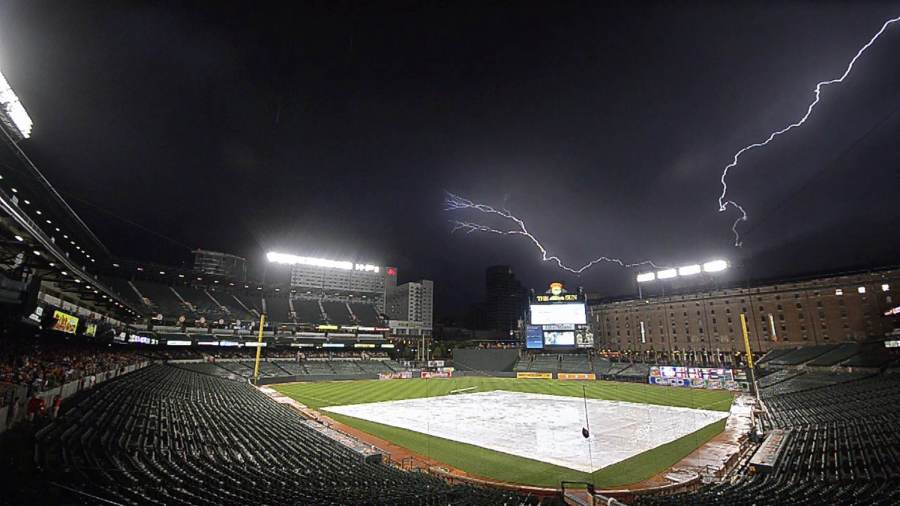How does Thor Guard work?
September 8, 2014
With a rainy, wet football season it might be helpful to know a few things about lightning and lightning detectors before this week’s electrifying game. So what, really, makes them call off a football game? And what does that little blinking light on the Thor Gaurd signify? To better understand lightning detectors, first we have to understand lightning.
We’ll skip the sixth grade science lesson and just say that water collects in the sky, and that creates clouds. As more and more water collects, the particles of moisture knock and bounce off each other. The droplets hit each other so hard that when this happens they actually jolt electrons off one another; electrons are the negative charges that surround the nucleus of an atom. This causes a kind of capacitor effect in the cloud, the top of the cloud becomes positive while the bottom becomes negatively charged.
Now this is when the real action sparks up. Electrons repel other electrons, and the bottom of this now-charged cloud is so negative, it actually pushes other electrons in the ground away. This leaves a spot of all positive charges, or protons, and since we all know negative and positive charges attract, we all know what happens next. The stream of electrons– hotter than the surface of the sun at this point–bolts towards the positive charges on the ground. Lightning can be as hot as 60,000 degrees farenheit and can contain up to 1 billion volts.
Shockingly, this equaling of charges emits more than just heat and light, it also emits a particular frequency; you would be able to hear it if you were listening to an AM radio during a thunderstorm. This is what lightning detectors operate on. The stronger this frequency is, the closer the lightning is. Ground-based systems, like the Thor Gaurd at PHS, need to triangulate a strike before they confirm it. This means the system has to make sure at least two other antennas have also detected a strike– which is why sometimes you’ll see a flash of lightning before the system can detect it. Lightning detectors can usually only predict lightning strikes withing 2-2.5 miles, and it takes around 30 lightning-free minutes to hear an all clear horn.
This all boils down to the fact that when the Thor Gaurd goes off, no matter what, everyone needs to listen. Negative and positive charge attraction is nothing to mess with, not even the Palatine O-line is tough enough to face one-billion volts. Hopefully now–with all the lightning facts you’ve picked up– the next time you hear the Thor Gaurd, you won’t be shocked.








